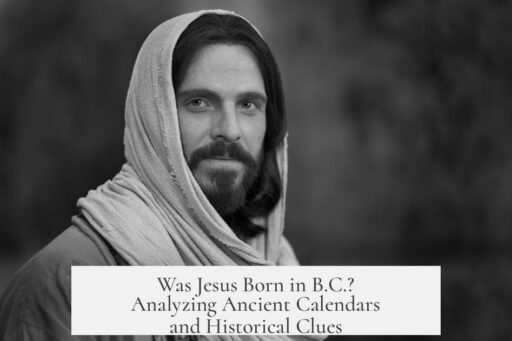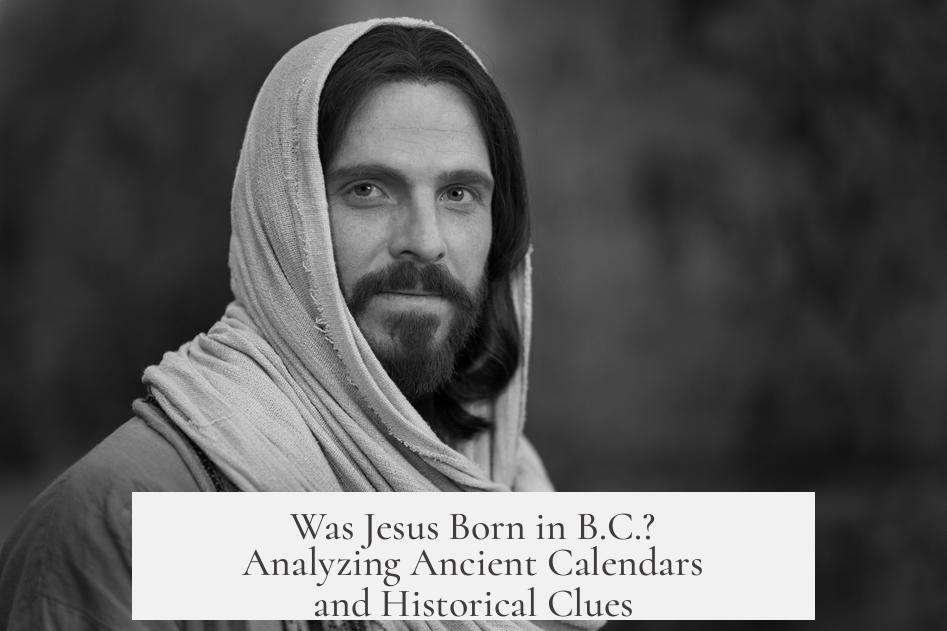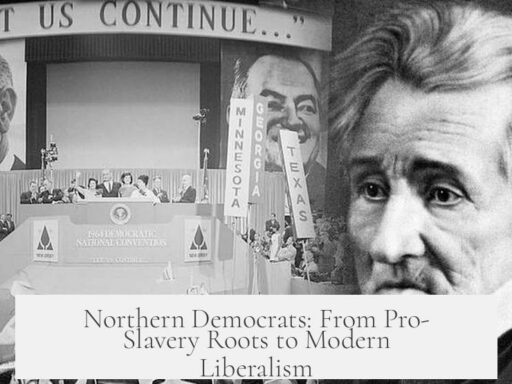Jesus was not born in B.C. based on historical and calendar scholarship. The designation of B.C. (Before Christ) and A.D. (Anno Domini—Year of Our Lord) stems from a calendar system devised long after Jesus’ lifetime, and the actual year of Jesus’ birth is uncertain, with evidence pointing to dates before and after what is traditionally labeled as the start of A.D. 1.

The common B.C./A.D. calendar was created by Dionysius Exiguus, a 6th-century Eastern monk working in Rome. His goal was to establish a Christian calendar for dating Easter in relation to the Roman Julian calendar. To calculate this, Dionysius used complex lunar and solar tables available from earlier scholars like Theophilus of Alexandria and Victorius of Aquitaine. His method was not scientific in the modern sense but based on existing religious and historical records combined with some estimation.
Dionysius assigned the year 753 Ab Urbe Condita (A.U.C.—from the founding of Rome) as year 1 Anno Domini. This roughly coincided with the rule of the Roman Emperor Augustus, who died in 14 A.D., believed to overlap with the time of Jesus’ birth and the reign of Tiberius for Jesus’ death. This starting point was an approximate, ballpark figure rather than a precise date.

Significantly, the calendar was not created to mark Jesus’ actual birth year. The dividing line between B.C. and A.D. serves as a calendar era rather than an exact historical timestamp, and different regions historically used varying days to mark new years, making the pinpointing of dates complex.
Historical and biblical data add to the ambiguity. The Gospels themselves do not provide exact birth dates. For example, the Gospel of Matthew links Jesus’ birth to the reign of King Herod the Great, who died in 4 B.C. Conversely, Luke mentions the Roman governor Quirinius conducting a census during Jesus’ birth, which happened around 6 or 7 A.D. Scholars generally find the Herodian timeline more plausible.

Within Luke’s account alone, references suggest a birth window stretching over about a decade, from as early as 4 B.C. to as late as 7 A.D., indicating that even early Christian writers lacked chronological precision. The earliest dated traditions on Jesus’ birth emerged only by the early 3rd century when disputes over Easter’s timing led theologians to extract more exact timelines from the scriptural texts, despite their vagueness.
The commonly known Christmas date, December 25th, was not established until the early 220s, as noted in fragments by Hippolytus of Rome, and refined by later chroniclers such as Eusebius in the 4th century. Dionysius Exiguus did not invent this date; his main contribution was to name the era “Anno Domini” centuries later, a detail often overstated today.

In summary, Jesus’ birth falls outside a straightforward B.C./A.D. boundary. This calendar era was a later construct and does not reflect a verifiable birth year. Jesus was likely born a few years before what the calendar labels as 1 A.D., given King Herod’s death in 4 B.C. Major scholarly consensus places his birth between 6 and 4 B.C., though some suggest dates into the early 1st century A.D. This means that Jesus was not born in the B.C. era as strictly defined by the calendar system now used worldwide.
- The B.C./A.D. calendar was developed in the 6th century by Dionysius Exiguus for Easter dating, not for Jesus’ birth dating.
- Jesus’ exact birth year is unknown; biblical texts suggest a birth time around 6-4 B.C. or possibly early A.D.
- Early Christians lacked precise birth date information; December 25th emerged later, not from Dionysius.
- The calendar era marks a tradition, not a confirmed historical birthdate.
Was Jesus Born in B.C.? A Deep Dive into Ancient Calendars and Historical Mysteries

Was Jesus born in B.C.? The short answer: Yes, most likely—but with a twist that challenges what we commonly think about the calendar we use today. Buckle up, because this question opens a fascinating world of ancient calendars, historical guesswork, and a few surprises about how we mark time.
First up, let’s clear a common misconception. The B.C. (Before Christ) and A.D. (Anno Domini, meaning “in the year of our Lord”) system is not a date-stamped fact determined at Jesus’s birth. It’s a later invention crafted by an Eastern monk with quite a spotty method, not modern science. His name? Dionysius Exiguus.

A Monk’s Quest: The Origin of the B.C./A.D. Calendar
Dionysius Exiguus lives in Rome in the 6th century, cracking open dusty archives, trying to determine when Easter should fall. His work involves juggling complex lunar and solar calendars – remnants of an ancient puzzle from folks like Theophilus of Alexandria and Victorius of Aquitaine. The goal: calculate Easter within the Roman Julian calendar. Sounds like a tough gig for a monk without a supercomputer.

In the process, Dionysius decides to anchor years around the supposed birth year of Jesus. He picks the year corresponding to 753 years after Rome’s founding (A.U.C.) and calls this the start of “Anno Domini.” No big archaeological or historical timestamp—just a rough estimate aligning with the reign of Emperor Augustus and his successor Tiberius.
The wider Christian world slowly adopts this framework, but remember—it’s an estimate, not a birth certificate.
Historical Clues: Did Jesus Arrive in B.C. or A.D.?
The Gospels themselves don’t offer neat timelines. Matthew links Jesus’s birth to King Herod the Great’s reign. Herod died in 4 B.C. That suggests Jesus’s birth occurred before 4 B.C.—definitely inside the B.C. zone. On the contrary, Luke’s Gospel points to Quirinius as governor of Syria, who held that position around 6 A.D. This creates a conflict of over a decade between stories.
Scholars weigh these clues and tend to favor the Herod timeline because it fits better with known history. So, if Matthew is right, Jesus was born several years before our calendar flips to A.D., solidly placing his birth in B.C., against the common misunderstanding that Jesus’s birth marks the start of A.D.
Why the Calendar Era Is a Bit of a Historical Oddity
Here’s a kicker—that calendar split between B.C. and A.D. wasn’t based on an actual birth date. Instead, third-century Christians thought Jesus was born around that dividing line, and later ecclesiastical decisions cemented the numbering.
Also, the calendar isn’t just about years. Different cultures counted days and months in various ways. Modern calendars typically start the year on 1 January, but that too was a gradual standard. The “calendar era” means the year count, separate from the exact calendar date we use for days and months.
The Birth Date We Don’t Really Know
No ancient records pinpoint Jesus’s birthday. Not even the Gospels offer a specific date.
| Gospel Source | Birth Year Indicators |
|---|---|
| Matthew | Herod’s reign (died 4 B.C.) |
| Luke | Quirinius’ governorship (6-7 A.D.) |
| Internal Chronology in Luke | Ranges from 2 B.C. to 7 A.D. |
This overlapping mess tells us that no early writer had certain details. In fact, references in Luke jump around, which is why pinpointing Jesus’s birthday remains a puzzle.
Calendar Spats and How December 25 Became The Big Date
The turning point came around 200 A.D., during a heated dispute about when to celebrate Easter, known as the Quartodeciman Controversy. Early Christians disagreed on following the Jewish lunar calendar or the Roman solar calendar. This controversy sparked a desire to sort out Jesus’s timeline more precisely.
As part of that effort, the date 25 December 1 B.C. popped up in early 3rd-century Rome writings—likely combining theological symbolism with evolving traditions.
By the 4th century, authorities like Eusebius chronography locked this date in place for Christmas, and it stuck. Dionysius Exiguus’s credit for coining “Anno Domini” appeared about 350 years after Jesus’s supposed birth, so his role is sometimes overblown in popular stories. The calendar era was already a thing before him.
Why Care About All This? The Takeaways
- Historical dating isn’t perfect: Our calendar system has quirks from human decisions, not precision history.
- Jesus’s birth likely happened B.C.: Based on the best historical clues, he was probably born a few years before year 1 A.D.
- Celebrate thoughtfully: December 25 is traditional but symbolic, not a confirmed birthday.
- Calendars evolve: From lunar cycles to papal decisions, calendar systems adapt and shift—a reminder that timekeeping blends culture and fact.
Next time you glance at a calendar, remember—you’re looking at layers of choices made centuries ago, including a monk’s educated guess about when Jesus was born. So, was Jesus born in B.C.? Yes, most historical evidence suggests so. But our method to number years around him is a human story just as interesting as the historical one.
Curious about other calendar mysteries or historical timelines that shaped what we know? Follow along, and we’ll dig even deeper into how the past meets present in unexpected ways!
Why is Jesus’ birth year called B.C. if the exact date is unknown?
The B.C./A.D. calendar was created by Dionysius Exiguus in the 6th century as a rough estimate. It was based on historical reigns rather than a precise birth year.
Did Dionysius Exiguus set the year of Jesus’ birth correctly?
No. Dionysius used available records but lacked exact data. Modern scholars believe Jesus was likely born a few years before year 1 A.D.
How do the Gospels differ on Jesus’ birth year?
Matthew places Jesus’ birth before 4 B.C. under King Herod’s reign. Luke suggests around 6 or 7 A.D., during Quirinius’s governorship. These differences create uncertainty.
When did December 25 become accepted as Jesus’ birth date?
The date of December 25 first appeared in the early 3rd century and became widely accepted by the 4th century. Early Christian sources did not provide a birth date.
Is the B.C./A.D. system based on Jesus’ actual birth year?
No, it reflects a calendar system set by early Christians for convenience, not a confirmed birth date of Jesus.



